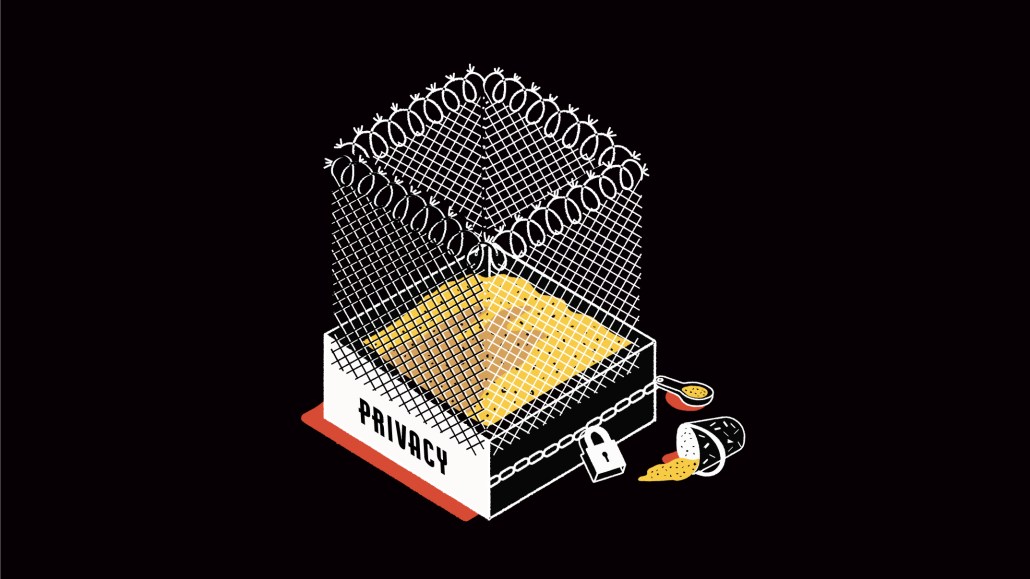Save 50% on a 3-month Digiday+ membership. Ends Dec 5.

This article is a WTF explainer, in which we break down media and marketing’s most confusing terms. More from the series →
Originally published on January 27, 2021, this article has been updated to include an explainer video and to reflect Google renaming FLEDGE to Protected Audience in April 2023.
Despite Google’s commitment to finding a privacy-safe alternative to third-party cookies by 2022, the company is still only tinkering with cookie replacement concepts.
Google has gathered its evolving collection of ad targeting and measurement methods in what it calls a Privacy Sandbox. This is an iterative process — “sandbox” in software parlance refers to a testing environment, after all. But in this case, Google is keeping observers updated as things develop.
The latest update is FLEDGE, which Google renamed “Protected Audience” in April 2023.
What is it?
FLEDGE Protected Audience puts into practice an earlier Google-led cookie replacement method called TURTELDOVE. It operates by making ad auction decisions in the browser itself, rather than at the ad server level. FLEDGE stands for “First Locally-Executed Decision over Groups Experiment.”
Ad position: web_incontent_pos1
Put simply, the idea is to help protect user privacy by limiting the amount of data flowing around ad systems and bidstreams. If ad bid and targeting decisions happen at the browser and device level, there will be less user data to siphon off for building user profiles, the argument goes.
FLEDGE incorporates ideas from other ad tech firms, according to Google. In a blog post mentioning the update, the company named Criteo, NextRoll, Magnite and RTB House as collaborators.
Criteo’s senior analytics and product manager Arnaud Blanchard told Digiday the company has had a team dedicated to participating in the Google-led process for the past year. “Early on, Criteo recognized the importance of being involved in the Privacy Sandbox and making sure we had a part in defining what the future may look like for cohort advertising on Google,” he said.
What’s new about FLEDGE?
At this point, it’s not clear what a trusted server is or whether Google or some other entity would control one.
Ad position: web_incontent_pos2
Chetna Bindra, Google’s group product manager of user trust and privacy told Digiday criteria for what makes a server trustworthy will be hashed out with others participants contributing to the Privacy Sandbox project.
What makes a server trustworthy anyway?
It may be that a trusted server is controlled by an independent third-party, or that it involves code audits or specific security methods, said Bindra. “The goal of the discussions in open forums including the W3C [Worldwide Web Consortium] is to collaboratively explore various qualities that would make up a trusted server, including potential requirements,” she said.
Of course, advertisers, publishers and ad tech firms cringe at the notion of Google controlling more of the ad process inside its own browser. One of Criteo’s proposals is to set up an “independent gatekeeper” such as a cloud service provider or server side platform to “provide people more control and transparency,” said Blanchard.
OK, so the industry is in total agreement on a cookie replacement, right?
No, not even close.
Although engineers from some ad tech firms are contributing to the project through a Worldwide Web Consortium forum set up by Google, many in the industry see it as yet another way for Google to control the data and tech that undergird the digital ad industry it helped create.
“By definition, this isn’t an industry standards group,” said Alan Chapell, president of privacy law firm Chapell and Associates, regarding the Privacy Sandbox effort.
Keep in mind that Apple, which makes the second-most-used browser, is not really involved in this Google-led Privacy Sandbox effort. Apple, of course, is on its own solitary crusade against third-party cookies and other cross-site tracking techniques.
Whatever Google and others settle on for tracking in the open web, it is unclear whether it would be accepted by Apple’s Safari browser.
So, what other cookie replacement stuff is happening then?
Not only are these Google-led methods not ready for prime time, this is just one of many approaches for replacing third-party cookies.
Some advertisers and publishers are moving toward first-party data identification services from LiveRamp, Neustar and others.
Then there’s the Partnership for Responsible Addressable Media, another industry collaboration for devising a universal ID standard. PRAM includes big name ad tech players such as MediaMath and the Trade Desk along with the biggest industry associations including the 4A’s, ANA and IAB.
What’s Next for FLEDGE?
Google Chrome will allow ad tech firms to test FLEDGE later this year. The company also plans to make another related sandbox toy which enables personalized ad targeting to groups or cohorts —FloC — (Federated Learning of Cohorts ) available for public testing in March. Google Ads advertisers will get first crack at FloC in second quarter.
More in Media

Digiday+ Research Subscription Index 2025: Subscription strategies from Bloomberg, The New York Times, Vox and others
Digiday’s third annual Subscription Index examines and measures publishers’ subscription strategies to identify common approaches and key tactics among Bloomberg, The New York Times, Vox and others.

From lawsuits to lobbying: How publishers are fighting AI
We may be closing out 2025, but publishers aren’t retreating from the battle of AI search — some are escalating it, and they expect the fight to stretch deep into 2026.

Media Briefing: Publishers turn to vertical video to compete with creators and grow ad revenue in 2026
Publishers add vertical video feeds to their sites to boost engagement, attract video ad spend and compete with news creators.
Ad position: web_bfu



